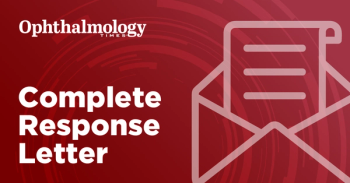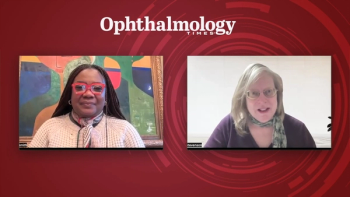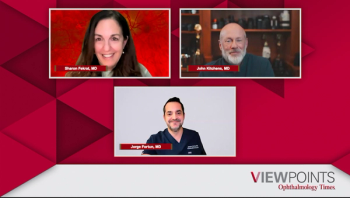
Demodex Blepharitis in a Contact Lens Wearer: Treatment Plan and Outcomes
A panelist discusses how treating demodex blepharitis with Lotilaner not only eliminates the anterior blepharitis symptoms but also improves meibomian gland function, with low recurrence rates after treatment and significant benefits for patient comfort and quality of life.
Comprehensive Management of Demodex-Associated Ocular Surface Disease
The treatment protocol for multifactorial ocular surface disease with Demodex blepharitis encompasses both conventional and advanced therapeutic approaches. Initial management for the young adult contact lens wearer included optimization of lid hygiene practices, elimination of potentially irritating cosmetic products containing preservatives such as benzalkonium chloride, and implementation of warm compresses. Advanced in-office procedures included combined thermal pulsation and microblepharoexfoliation to address both meibomian gland dysfunction and anterior blepharitis through mechanical debridement of biofilms and collarettes. While intense pulsed light therapy (IPL) was considered particularly appropriate given the patient's telangiectatic rosacea, recurrent chalazia, and Demodex infestation, the initial treatment approach prioritized thermal pulsation with plans for potential future IPL. Systemic management included continuation of oral doxycycline and dermatologist-prescribed topical ivermectin for facial rosacea. Most critically, FDA-approved lotilaner ophthalmic solution was prescribed twice daily for 6 weeks specifically targeting the Demodex component.
Clinical outcomes at 8-week follow-up demonstrated significant improvement across multiple parameters. The patient reported full-day contact lens tolerance, minimal artificial tear requirements, complete resolution of recurrent chalazia, and successful cosmetic use without irritation—representing substantial quality-of-life improvements. The resolution of contact lens intolerance was particularly significant, as the patient had initially presented considering laser vision correction but ultimately found contact lens wear comfortable and sustainable following Demodex eradication. This outcome highlights the importance of addressing underlying ocular surface disease before proceeding with elective refractive procedures, as untreated Demodex blepharitis may compromise post-surgical outcomes or precipitate unnecessary interventions when more conservative management would suffice.
Clinical experience with lotilaner suggests high efficacy with near-complete collarette resolution following a standard 6-week treatment course, occasionally extended to 8 weeks when clinically indicated. Research data demonstrates relatively low recurrence rates, with statistically significant differences between treatment and vehicle groups throughout the first year post-treatment, consistent with clinical observations. Emerging research further suggests benefits beyond anterior blepharitis eradication, with studies demonstrating improved meibomian gland secretion scores and increased numbers of functional glands yielding liquid secretions following lotilaner therapy. These improvements were statistically significant compared to vehicle at both 43 and 85 days, suggesting efficacy against both Demodex folliculorum in lash follicles and Demodex brevis in meibomian glands. This dual mechanism explains the observed clinical improvements in meibomian gland function following Demodex-specific therapy, representing an important advancement in understanding the relationship between Demodex infestation and meibomian gland dysfunction in the pathophysiology of ocular surface disease.
Newsletter
Don’t miss out—get Ophthalmology Times updates on the latest clinical advancements and expert interviews, straight to your inbox.













































